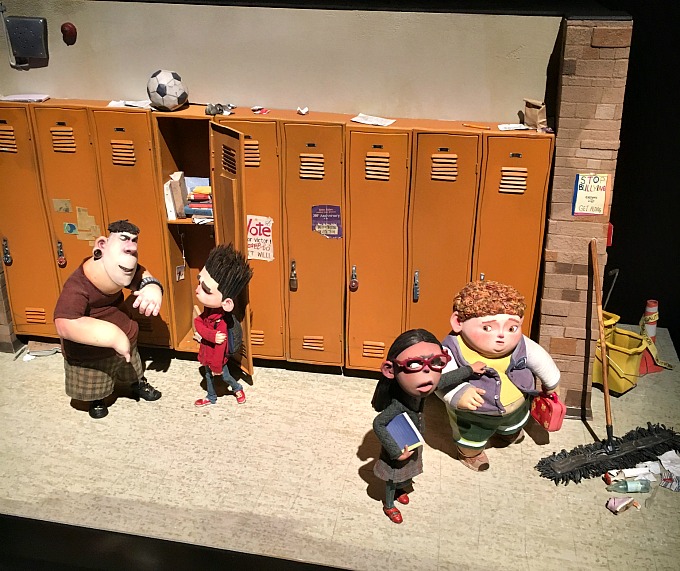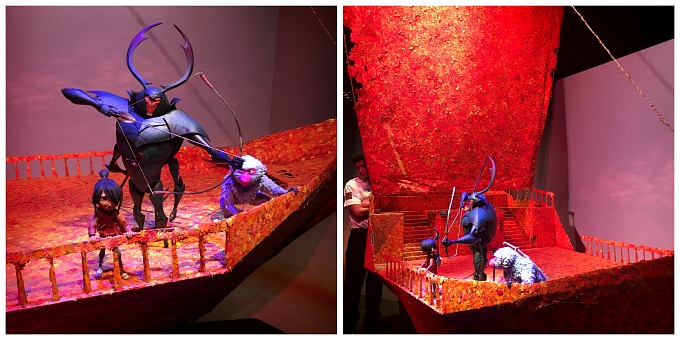We, at Ahimsa Media, have so much respect for the patience and attention to detail required of stop motion storytelling! I recently had the opportunity to view an educational display of props and characters used by Laika Studios in some of their very popular feature films including, ParaNorman, The Boxtrolls, Coraline, and their most recent release, Kubo and the Two Strings. With it taking approximately 5 years to complete an animated feature of this genre, you can imagine the journey involved, and the effort to keep the story fresh and engaging for those working on it.

Coraline’s house from the movie Coraline. This is the actual model used during production, as are all the others shared here.

A scene from ParaNorman. Look closely at the details of all the tiny props. Each one is made by Laika team specialists. We were shown a video of a tiny lamp being made using real glass blowing techniques and very steady hands!

This is a working set from Kubo and the Two Strings, notice the lights which add authenticity and shadows. A stop motion film has more depth to it, because there actually is depth with the characters being in real constructed rooms.
Laika has mastered the blend of technology with the age old technique of stop motion by utilizing 3D printing to create replaceable character heads with expressions more realistic than has ever been done before. A main character, such as Norman may have a face made up of over 78 individual pieces, with thousands of those needed to produce different looks. The protagonist from Kubo for example, has 66,000 face pieces for a total of 48 million different possible facial expressions. You may be starting to see why it takes so long to complete storytelling on a project like this. Just the 3D printing alone takes years to complete, with it taking so many hours for each piece.

A few of the removable character facial pieces from Kubo and the Two Strings depicting different expressions.
24 facial expressions are needed per second of filming, with an equal number of photos! No video is ever taken, an entire movie is made up of over 5 thousand images alone. Laika does also masterfully blend CGI elements to make wires disappear or add rooftops to buildings that had to be open, plus some necessary special effect needs that come up.

This boat from Kubo and the Two Strings has over 200,000 hand glued paper leaves on it. Not sure why the security guard is so sheepishly hiding behind it!
Knowing how long it takes to complete one of these storytelling projects has us wondering how many stories are in the works right now that we can look forward to in the next 5 years! Can’t wait to enjoy them with our enlightened knowledge of the craft.


Wow. The amount of effort, time and money studios put into stop motion storytelling is outstanding. So impressive!